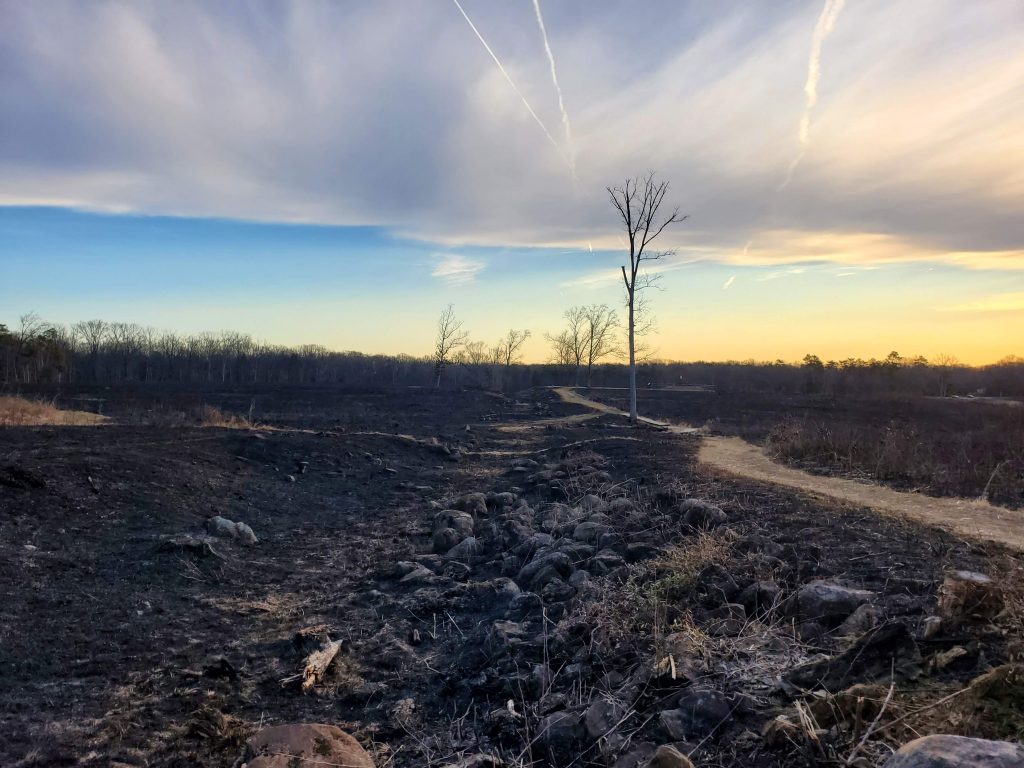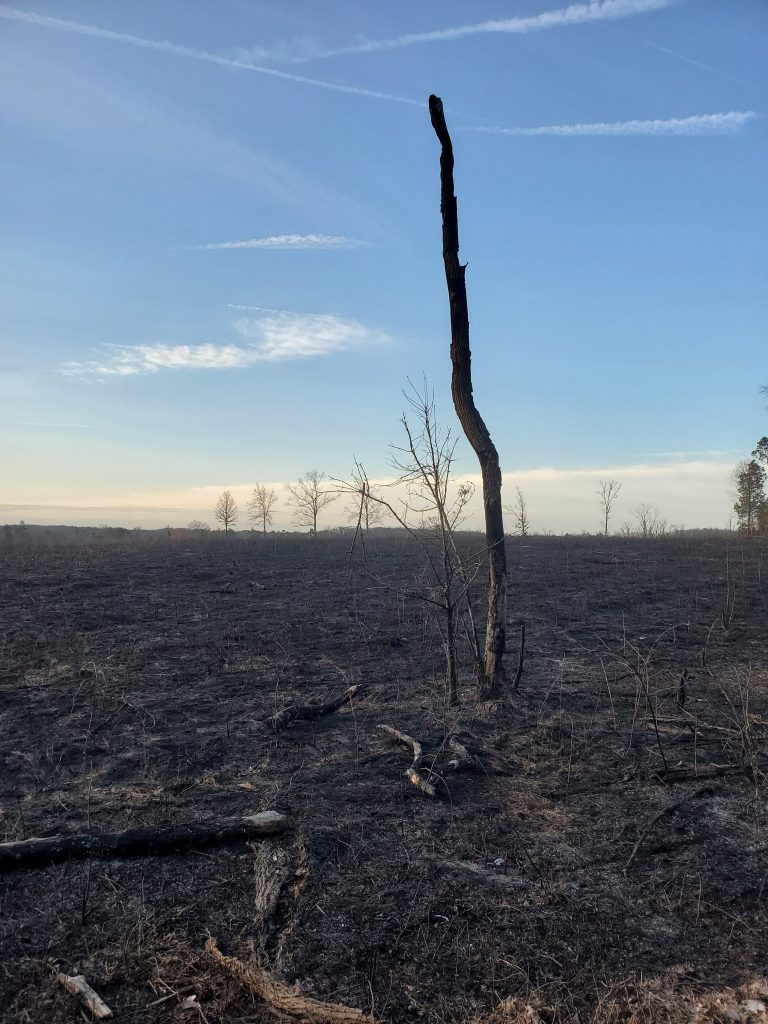The Deep Cut Burns
A couple of weeks ago, Manassas National Battlefield held a controlled burn in the area of the Deep Cut. Here, on August 30, 1862, thousands of Union soldiers led by Maj. Gen. Fitz John Porter attacked Confederate troops positioned along an unfinished railroad embankment. Stonewall Jackson’s defenders bloodily repulsed the Federals, which set the stage for the dramatic conclusion to the Battle of Second Manassas.
I have been thinking a lot lately about Porter’s attack here since Porter is the subject of my talk for the 2021 Emerging Civil War Symposium. The fighting at the Deep Cut has fascinated me otherwise. It was a brutal, close-quarters, deadly action. One local citizen who served as a guide for the Confederate army walked the path of Porter’s assault the next day. He claimed he “saw more destruction of life here” than any other battlefield of the war. “I could have walked a hundred yards on dead and wounded men and never touch my feet to the ground.” Hopefully, none of us will ever have an experience like this. But a controlled burn was about the closest I thought I might get to see a landscape scarred by an event reminiscent of a Civil War battle.
Once the burn subsided and the National Park Service deemed it safe for visitors, I set out to walk the Deep Cut area. Looking from the parking lot, one could see the trail network weaving through blackened earth. The lack of undergrowth made the subtleties of the terrain stand out. However, as I began to walk, the smell that wafted towards my nose soon replaced the visual sensations.
 I walked the area four days after the burn ended. The smell lingered. For anyone who reads Civil War diaries and letters, soldiers talk about the smell–the stench of dead men and horses, charred ground,and burnt gunpowder. The entire Deep Cut area smelled like a large bonfire after days of quiet. It was a smell I could not escape, and one that made me recall many quotes I have read about the stench of a battle’s aftermath.
I walked the area four days after the burn ended. The smell lingered. For anyone who reads Civil War diaries and letters, soldiers talk about the smell–the stench of dead men and horses, charred ground,and burnt gunpowder. The entire Deep Cut area smelled like a large bonfire after days of quiet. It was a smell I could not escape, and one that made me recall many quotes I have read about the stench of a battle’s aftermath.
As I moved closer to the unfinished railroad, another hallmark of the effects of battle on a natural landscape struck me: the desolation. Blackened tree trunks stood solo amidst open fields with no leaves, bringing to mind images of wartorn landscapes around Atlanta, Petersburg, Fredericksburg, or any World War I battlefield. Though this burn was controlled, it left me tangible reminders of how a battlefield must have looked, smelled, and felt after uncontrolled chaos engulfed it.
Thank you for the thought provoking article and photographs. The photos really bring your point home.
My ancestor in the 82d Ohio under Milroy fought in this area. Milroy supposedly roused his men by saying “whip them before breakfast”, a boast that did not exactly come to pass.
Thank you for this insightful post. I’ve watched rangers conduct controlled burns at Gettysburg, but never though about comparing the smells to those after a battle.
Insightful writing. Such an amazing element of battle. Reminds me of the defenders of the Alamo. Brutal hand to hand and rock throwing.
Neat pictures.
Thoughful post. You have inspired me to walk the ground at the Deep Cut tomorrow!
Thanks for the post. I have walked this area and can totally relate to what you were seeing and how the smell was so affecting. Appreciate the photo to see the underlying landscape; I was there in the summer.
Fantastic points. I’m glad they’ve cleared the Deep Cut, as it is important and evocative ground.
I agree! I wasn’t aware of the burn, so when I exploded out of the trees of the unfinished railroad it was simply there in all its desolation. Really amazing.